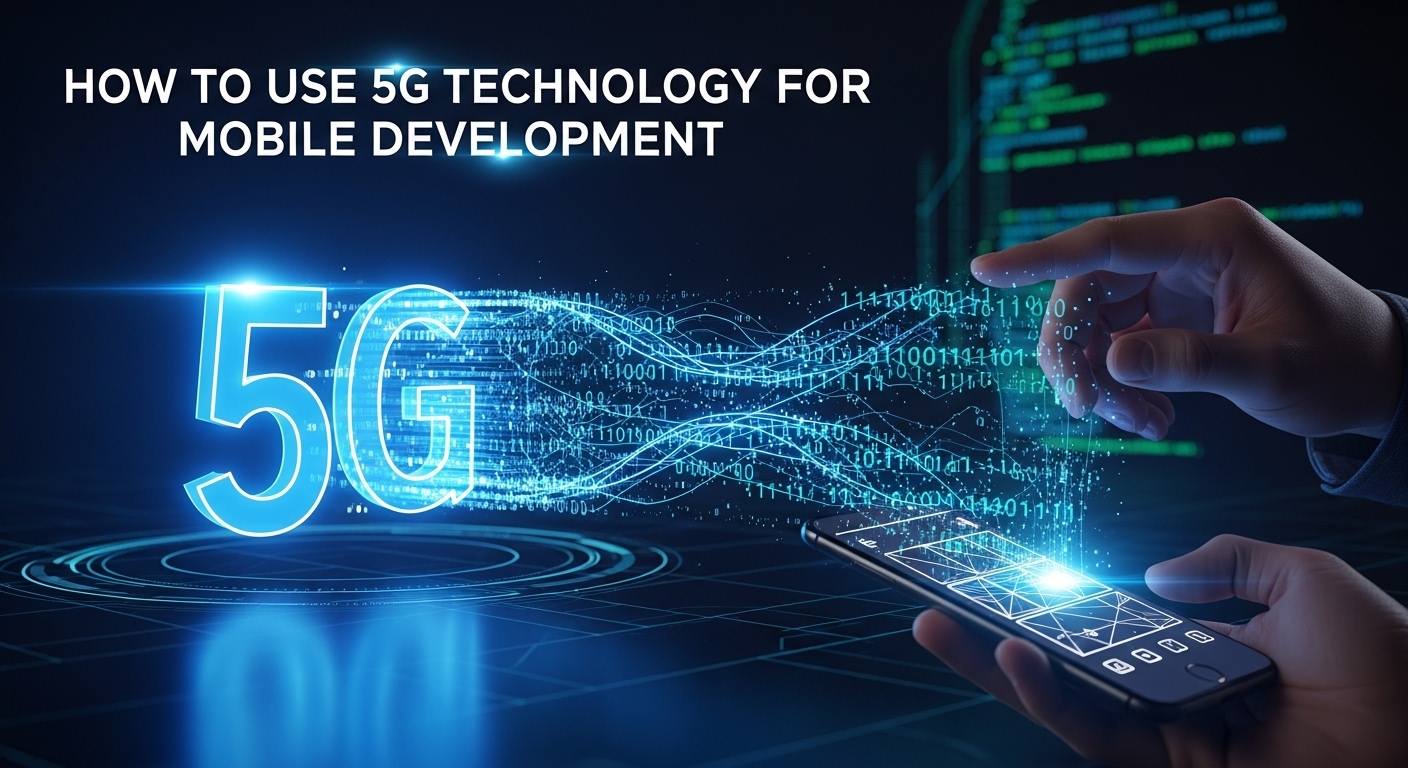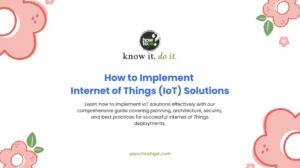The mobile development landscape is experiencing a seismic shift with the widespread adoption of 5G mobile development technologies. As developers, understanding how to harness the power of fifth-generation wireless technology isn’t just an advantage, it’s becoming essential for creating next-generation mobile experiences that users expect.
Understanding the 5G Revolution in Mobile Development
5G mobile development represents more than just faster internet speeds. This technology introduces ultra-low latency, massive device connectivity, and enhanced reliability that fundamentally changes how we approach mobile application architecture and user experience design.
Traditional mobile development relied heavily on optimizing for slower network conditions and limited bandwidth. However, 5G technology opens doors to possibilities that seemed impossible just a few years ago. Applications can now process real-time data streams, support augmented reality experiences seamlessly, and enable instantaneous cloud computing integration.
The key differentiators of 5G technology include:
- Enhanced Mobile Broadband (eMBB): Peak data rates of up to 20 Gbps
- Ultra-Reliable Low Latency Communications (URLLC): Latency as low as 1 millisecond
- Massive Machine Type Communications (mMTC): Support for up to 1 million devices per square kilometer
Core Technical Foundations of 5G Mobile Development
Network Architecture Considerations
When developing for 5G mobile development environments, understanding the underlying network architecture becomes crucial. The 5G New Radio (NR) standard introduces network slicing capabilities, allowing developers to request specific network performance characteristics for their applications.
Network slicing enables applications to reserve bandwidth and latency guarantees directly from the carrier infrastructure. This means developers can build applications with predictable performance characteristics, something previously impossible in mobile development.
Edge Computing Integration
5G networks integrate seamlessly with Mobile Edge Computing (MEC) platforms, bringing computational resources closer to end users. This proximity reduces latency and enables real-time processing capabilities that transform mobile application possibilities.
Developers can now offload computationally intensive tasks to edge servers while maintaining the responsive user experience users expect. This distributed computing model requires rethinking traditional mobile application architectures and embracing hybrid cloud-edge development patterns.
7 Revolutionary Applications of 5G Technology in Mobile Development
1. Real-Time Augmented Reality Applications
5G mobile development enables sophisticated augmented reality experiences that were previously limited by network constraints. The combination of high bandwidth and low latency allows for seamless rendering of complex 3D models and real-time object tracking.
Consider developing AR applications that overlay contextual information onto live camera feeds without noticeable delay. Manufacturing applications can provide real-time equipment diagnostics, while retail applications can offer instant product information and virtual try-on experiences.
2. Cloud-Native Mobile Gaming
The gaming industry is experiencing a revolution through 5G-enabled cloud gaming platforms. Developers can create console-quality gaming experiences that run entirely in the cloud while delivering smooth gameplay to mobile devices.
This approach eliminates device storage limitations and hardware constraints, allowing developers to focus on creating rich, immersive gaming experiences without worrying about device compatibility issues.
3. Internet of Things (IoT) Integration
5G’s massive device connectivity capabilities enable mobile applications to serve as centralized control hubs for complex IoT ecosystems. Smart home applications can manage hundreds of connected devices simultaneously while maintaining real-time responsiveness.
Developers can create applications that orchestrate complex IoT workflows, from industrial automation systems to smart city infrastructure management platforms.
4. Advanced Video Streaming and Processing
5G mobile development unlocks new possibilities for video-centric applications. Ultra-high-definition streaming, real-time video processing, and interactive live streaming become feasible for mainstream mobile applications.
Applications can now support 8K video streaming, real-time video analytics, and collaborative video editing directly on mobile devices without compromising performance or user experience.
5. Mission-Critical Communication Systems
The ultra-reliable nature of 5G networks enables development of mission-critical communication applications for emergency services, healthcare, and industrial environments. These applications can guarantee message delivery and maintain connectivity even under challenging conditions.
Healthcare applications can support real-time patient monitoring and telemedicine consultations with guaranteed quality of service, while emergency response systems can coordinate complex multi-agency operations through reliable communication channels.
6. Autonomous Vehicle Integration
Mobile applications are becoming integral components of autonomous vehicle ecosystems. 5G mobile development enables real-time communication between vehicles, infrastructure, and mobile applications for enhanced safety and navigation capabilities.
Developers can create applications that provide real-time traffic optimization, predictive maintenance alerts, and seamless integration with vehicle systems for improved user experiences.
7. Enhanced Enterprise Mobility Solutions
Enterprise mobile applications benefit significantly from 5G capabilities, enabling real-time collaboration, remote work solutions, and industrial automation control through mobile interfaces.
Field service applications can access real-time equipment data, provide augmented reality guidance for complex procedures, and maintain constant connectivity with enterprise systems regardless of location.
Technical Implementation Strategies for 5G Mobile Development
API Integration and Network Detection
Successful 5G mobile development requires applications that can intelligently detect network capabilities and adapt functionality accordingly. Implementing progressive enhancement strategies ensures applications provide optimal experiences across different network conditions.
Modern mobile development frameworks provide APIs for detecting 5G connectivity and adjusting application behavior based on available network capabilities. Applications should gracefully degrade functionality when 5G isn’t available while taking full advantage of enhanced capabilities when present.
Performance Optimization Techniques
Optimization Area | 4G Approach | 5G Enhancement |
Data Loading | Aggressive caching, minimal requests | Real-time streaming, dynamic content |
Media Handling | Compressed formats, progressive loading | High-resolution, real-time processing |
User Interface | Optimized for slower responses | Interactive, real-time feedback |
Background Processing | Limited, battery-conscious | Enhanced, cloud-offloading |
Security Considerations
5G networks introduce new security paradigms that mobile developers must understand and implement. Network slicing creates isolated network segments, but applications must implement end-to-end encryption and secure communication protocols.
Enhanced authentication mechanisms, secure key management, and privacy protection become more critical as applications handle increased data volumes and real-time sensitive information.
Development Frameworks and Tools for 5G Mobile Applications
Cross-Platform Development Solutions
Modern cross-platform frameworks like React Native, Flutter, and Xamarin are evolving to support 5G-specific features. These frameworks provide APIs for accessing network capabilities, edge computing resources, and advanced device sensors.
Developers should evaluate framework capabilities for handling real-time data streams, WebRTC integration, and cloud-native architectures when selecting development platforms for 5G mobile development projects.
Testing and Quality Assurance
Testing 5G mobile applications requires new approaches that account for variable network conditions, edge computing latencies, and device diversity. Comprehensive testing strategies should include network simulation, edge computing testing, and real-world 5G network validation.
Automated testing frameworks must accommodate the dynamic nature of 5G networks and validate application performance across different network slices and edge computing configurations.
Future Trends and Considerations in 5G Mobile Development
Emerging Technologies Integration
The convergence of 5G with artificial intelligence, machine learning, and blockchain technologies creates new opportunities for mobile application innovation. 5G mobile development will increasingly incorporate these technologies to create intelligent, adaptive applications.
Edge AI processing becomes practical with 5G’s low latency characteristics, enabling real-time machine learning inference directly on mobile devices without cloud dependencies.
Industry-Specific Applications
Different industries are adopting 5G mobile solutions at varying rates, creating opportunities for specialized application development. Healthcare, manufacturing, transportation, and entertainment industries each present unique requirements and opportunities for 5G-enabled mobile applications.
Understanding industry-specific needs and regulatory requirements becomes essential for developers targeting vertical markets with 5G mobile solutions.
Best Practices for 5G Mobile Development Implementation
- Progressive Enhancement Strategy: Implement applications with progressive enhancement principles, ensuring base functionality works across all network conditions while providing enhanced experiences when 5G capabilities are available. This approach maximizes application reach while leveraging advanced capabilities when possible.
- User Experience Design Principles: 5G capabilities enable new user experience paradigms, but developers must balance enhanced functionality with usability and accessibility. Real-time features should enhance rather than complicate user interactions, and applications should provide clear feedback about network-dependent functionality.
- Performance Monitoring and Analytics: Comprehensive monitoring becomes crucial for 5G applications due to their dependence on network capabilities and edge computing resources. Implement analytics that track network performance, edge computing utilization, and user experience metrics across different 5G deployment scenarios.
Conclusion: Embracing the 5G Mobile Development Revolution
The transition to 5G mobile development represents a fundamental shift in how we approach mobile application design and implementation. Developers who understand and leverage 5G capabilities will create the next generation of mobile experiences that define user expectations and industry standards.
Success in 5G mobile development requires understanding both the technical capabilities and practical implementation challenges. By focusing on progressive enhancement, security, and user experience, developers can create applications that harness the full potential of 5G technology while maintaining broad accessibility and reliability.
The future of mobile development is being written today through 5G technology adoption. Developers who invest in understanding and implementing 5G capabilities position themselves at the forefront of mobile innovation, ready to create applications that seemed impossible just a few years ago.
For continued learning and implementation guidance, explore resources from the 5G Alliance and GSMA 5G Implementation Guidelines to stay current with evolving standards and best practices in this rapidly advancing field.











